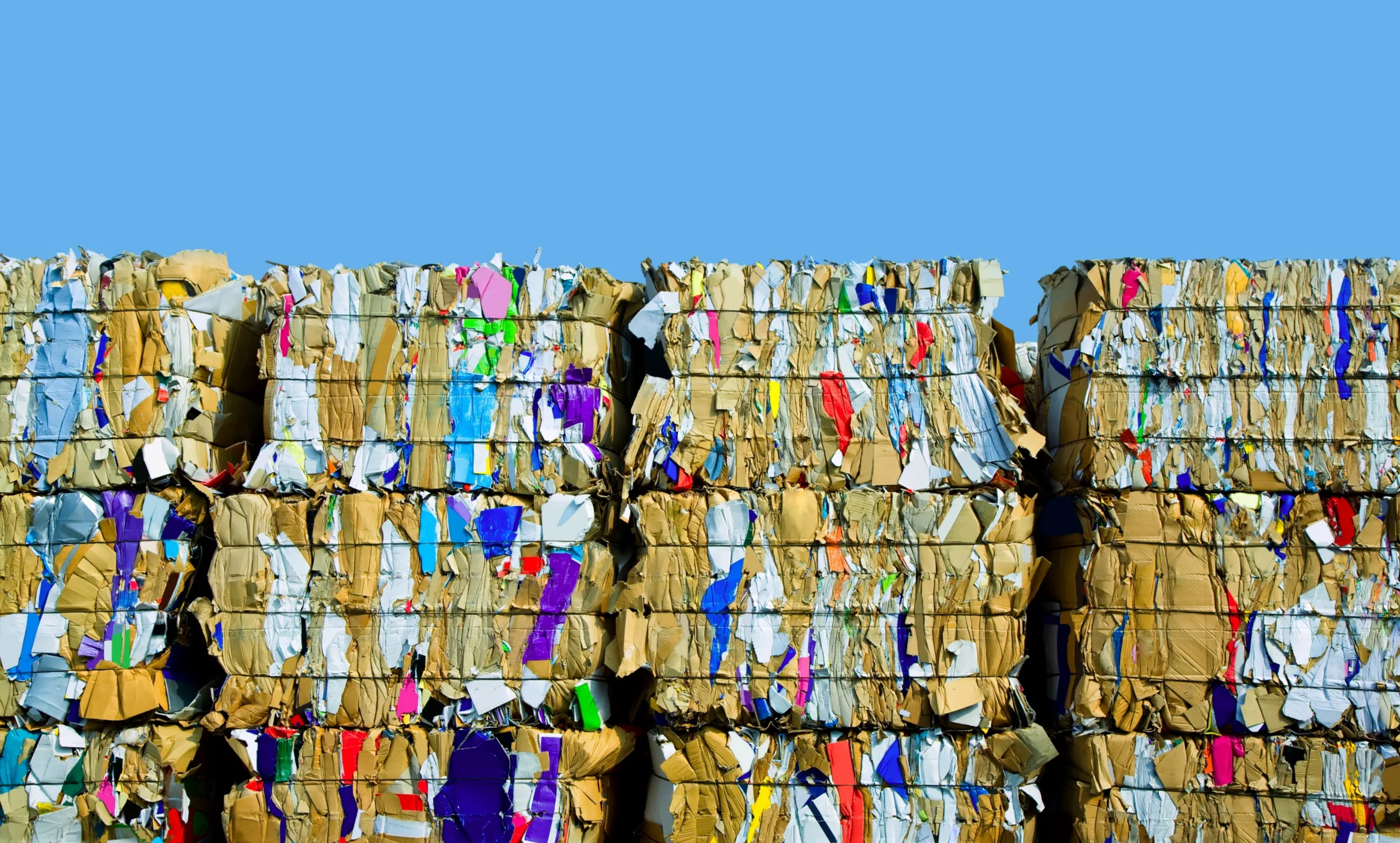Packaging design: designing for a circular economy

Packaging has an important role to play in protecting products during storage and shipping. It also needs to be designed, used, and managed properly to minimise its impact on the environment. This is why considering the entire lifecycle of packaging during the packaging design is critical.
As the climate emergency continues, responsible businesses are looking to take measures to reduce their impact on the environment. So, where does packaging fit in? Packaging materials can be an often-overlooked commodity that can help businesses lower their operating costs but also their carbon footprint if they are optimised.
In this blog, we’ll consider why packaging design is important and why long term, we should be designing packaging to support the shift to a circular economy.
- 1.
- 2.
- 3.
- 4.

What is circular economy?
A circular economy is a model of production and consumption that involves reducing, reusing and finally recycling materials for as long as possible. It is a model based around regenerating nature and creating a more sustainable economy for the 21st century.
The Ellen Macarthur Foundation explains that a circular economy is based on three principles:
- Eliminating waste and pollution – as many natural resources are finite, it is not sustainable to keep taking raw materials and throwing them away. A circular economy aims to reuse, recycle and renew materials – ensuring that any waste and pollution is minimised.
- Circulating products and materials – this principle is all about keeping materials in use at their highest value for as long as possible. When a product can no longer be used, it can be circulated as components or raw materials for reuse.
- Regenerating nature – moving from a take and make approach to one that supports natural processes will help nature thrive and reduce our impact on the environment.
So, how does circular vs. linear economy compare? Essentially, today’s economy is largely linear. We obtain resources from the environment, use them and then, eventually, dispose of them. In a circular economy, the idea is to stop the production of waste in the first place.

The impact of packaging on the environment
The role of packaging, in most instances, is to protect products. If packaging is doing its job properly and the packaging design is optimised, it can help limit your impact on the environment.
Unfortunately, if packaging hasn’t been designed appropriately, it can have a knock-on effect. This can include increasing the CO2e associated with packaging due to the material used, the journeys it must take or damage in transit, as well as increasing waste if the right amount of material isn’t used. Plus, if packaging isn’t disposed of or recycled properly, it can lead to pollution or excessive resource use – which no one wants.
Why we should design packaging for the circular economy
To create circular packaging or any circular product, it all starts with design. So, if you want to become a more circular business through your packaging, design is a fundamental building block in the process. Start thinking about the onwards path that your packaging will take…
Considering the lifecycle of a particular packaging design from the material specification, size and weight, through to the application, journey through a supply chain and then reuse or repurposing are all important.
Shifting mindsets to factor in CO2e and packaging waste as design flaws will help businesses and packaging designers minimize their impact on the environment. And well-designed packaging not only benefits the environment, but it can benefit business too – reducing operating costs by taking out weight and material, as well as creating positive customer experiences.

Understanding the difference between circular packaging, reusable packaging, and sustainable packaging
So, when it comes to packaging design and the circular economy, there are lots of different terms and definitions knocking about. Here are explanations of some of the most common:
- Circular packaging – this type of packaging refers to packaging designs that can be reused, recycled, or even composted rather than being thrown away.
- Reusable packaging – this type of packaging often refers to a packaging solution that can be reused multiple times without compromising its protective function. Often, it takes multiple trips through a supply chain and is frequently found in closed loop systems. Often these packaging products are more environmentally intensive to manufacture so the environmental benefit only comes if it can in practice be reused many times.
- Sustainable packaging – packaging that is considered sustainable is packaging that produces the most negligible impact on the environment. Both circular and reusable packaging could fall under the sustainable packaging umbrella.

Examples of packaging design for a circular economy
With the circular economy in mind, here are three examples of reusable or circular packaging products:
1. Optimised cardboard boxes – now a plain old box might not come to mind when you think about packaging design for a circular economy. But corrugated cardboard is made from a sustainable and renewable material that can be recycled multiple times.
By applying circular design principles when creating a cardboard box, you can optimise the weight, the material, the protection and even the palletisation of the packaging to make it lower impact. In addition, clear labelling and designing with recycling in mind, can help ensure the best end of life solution.
2. Reusable corrugated plastic boxes – durable, reusable, and long-lasting, Correx® boxes can be used instead of cardboard for a wide range of applications. They are resistant to moisture and weatherproof, so can be used in transit conditions that may be humid or wet. They can be used multiple times, helping minimise environmental impact and reducing overall costs.
3. Plastic pallets – reusable plastic pallets are a longer lasting alternative to wooden pallets. They are particularly suitable for the movement of produce, IT equipment and pharmaceuticals where good hygiene and clean working environments are important, as they can be washed. They’re also suitable for closed loop systems.
Support with circular packaging design
At Macfarlane Packaging, our experts can help you design packaging with the circular economy in mind. Our unique tools (like the Packaging Optimiser) and facilities (including our two Innovation Labs), as well as our extensive product range and knowledge can help you create the lowest impact packaging solution for your supply chain. Contact us to learn more.
